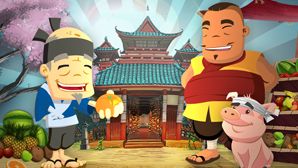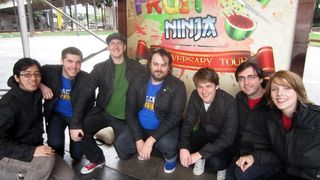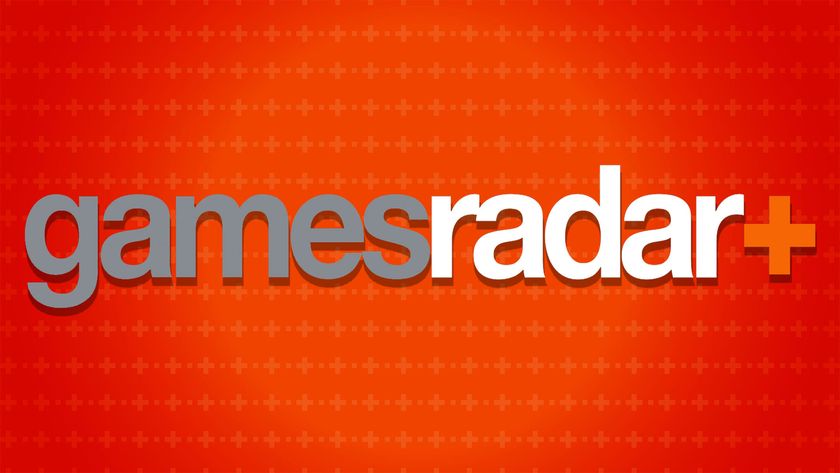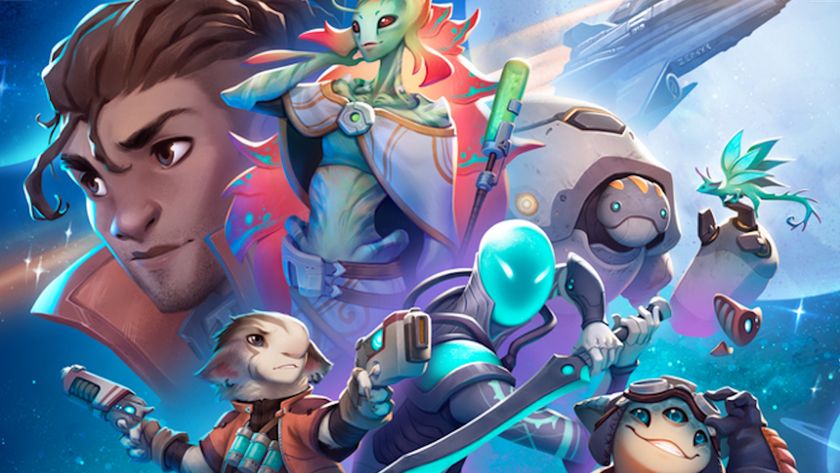Sweet Success: how Fruit Ninja sliced to the top
Halfbrick Studios' Phil Larsen talks about how one Australian team created one of the world's biggest gaming hits

Gaming, it seems, is built on a solid foundation. One of shooting, of racing, of fetch quests. Of inventory management and collecting hidden tokens. Familiar themes pop up time and again, and although the visuals might come with a few extra polygons and the sound might sport an extra channel or three, at its core the fundamental aspects are as pure as the driven code.
But then there are the games that see us flinging birds from a slingshot. Or building a pixel art tower. Or slicing fruit as it’s thrown up in the air. And often, we play them every day.
Smartphone and tablet gaming is very much its own beast, spawning a unique range of experiences that only those platforms could provide. Contrary to the consoles, which often require an investment of time and attention, these games need only a handful of minutes whereby one can while away a commute, waiting room visit, or boring meeting with nary a moment’s thought. These games go where you go. They’re ready when you are. And their concepts, in case it’s not obvious, challenge some of the most fundamental notions of game design.
In the case of Fruit Ninja, developed in Brisbane by Halfbrick Studios and now celebrating two years of citrus-slashing success, Chief Marketing Officer Phil Larsen attributes its a-peel (sorry) to its simplicity - specifically, the innate desire of destruction. “If you have a watermelon in your hands,” he says, “you’re always going to think what would happen if you threw it off the balcony. That’s what you want to do. And that’s why, in our game, we wanted every slice to provide that level of satisfaction.”
Fruit Ninja does just that. Packing a simple one-screen concept - slice the fruit, avoid the bombs - it’s a game that has seen over 300 million downloads since its launch. Staggering numbers by any stretch, belying the belief that the ever-rising bars of content, scope and scale need to be met in order for a game to succeed. “Look at all the other popular phone games,” says Larsen. “Doodle Jump, Angry Birds. They’re really good, they’re so simple to play, and the results are there.” In the smartphone gaming realm, less, it seems, is more.

Above: Phil Larsen, centre, and the Halfbrick team celebrate two years of Fruit Ninja
But digital distribution, as this format requires, is a double edged sword. While it ensures it gets a game into consumers’ hands quickly and easily, it comes without many of the benefits of a traditional packaged product. “The market’s completely changed,” says Larsen. “A few years ago, on a traditional platform, a game might do really well, so off they go to make a sequel. With digital, it doesn’t work that way. We’ve seen sequels of popular games come out and they kind of fall a bit flat. There’s no Fruit Ninja 2 - it’s more furthering the game through iterative processes, and people are becoming accustomed to that and they understand that. It’s beneficial for us, but at the same time we do want to make new content and we do like refreshing stuff, so it’s about finding that balance.”
Sign up to the 12DOVE Newsletter
Weekly digests, tales from the communities you love, and more
Smartphone gaming presents many big questions, but when it comes to Fruit Ninja, Larsen is faced with the biggest question of all: who would play the banana in a Fruit Ninja movie?
“There’s only one guy,” he says without hesitation, “and that’s Stephen Last, the lead programmer for Fruit Ninja. When we made the original trailer, and the Kinect trailer, we dressed up in fruit costumes and ran around doing martial arts in the park. We need some people who could do it and he’s programming away and said yeah I’ll do it. And he just killed the part. He’s just so wacky and crazy. No one else could ever play that part. He could bring it right alongside Brad Pitt.”
To find out how Fruit Ninja made the leap to Microsoft’s Kinect platform, be sure to pick up issue 82 of Official Xbox Magazine Australia, on sale from June 12.
Most Popular








